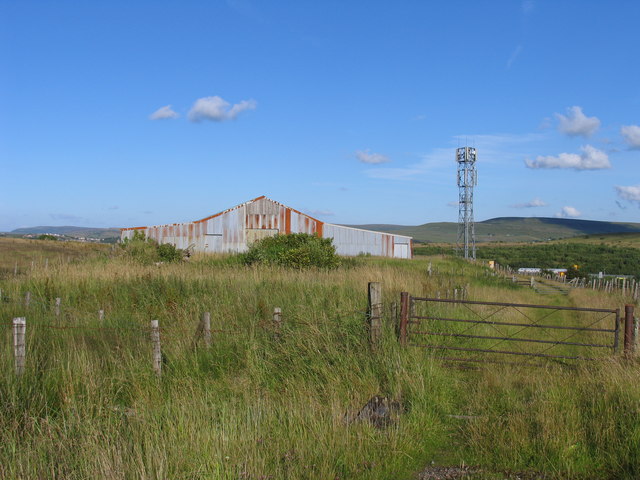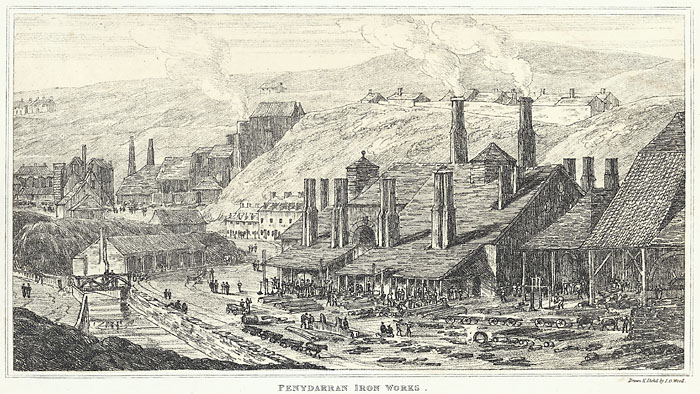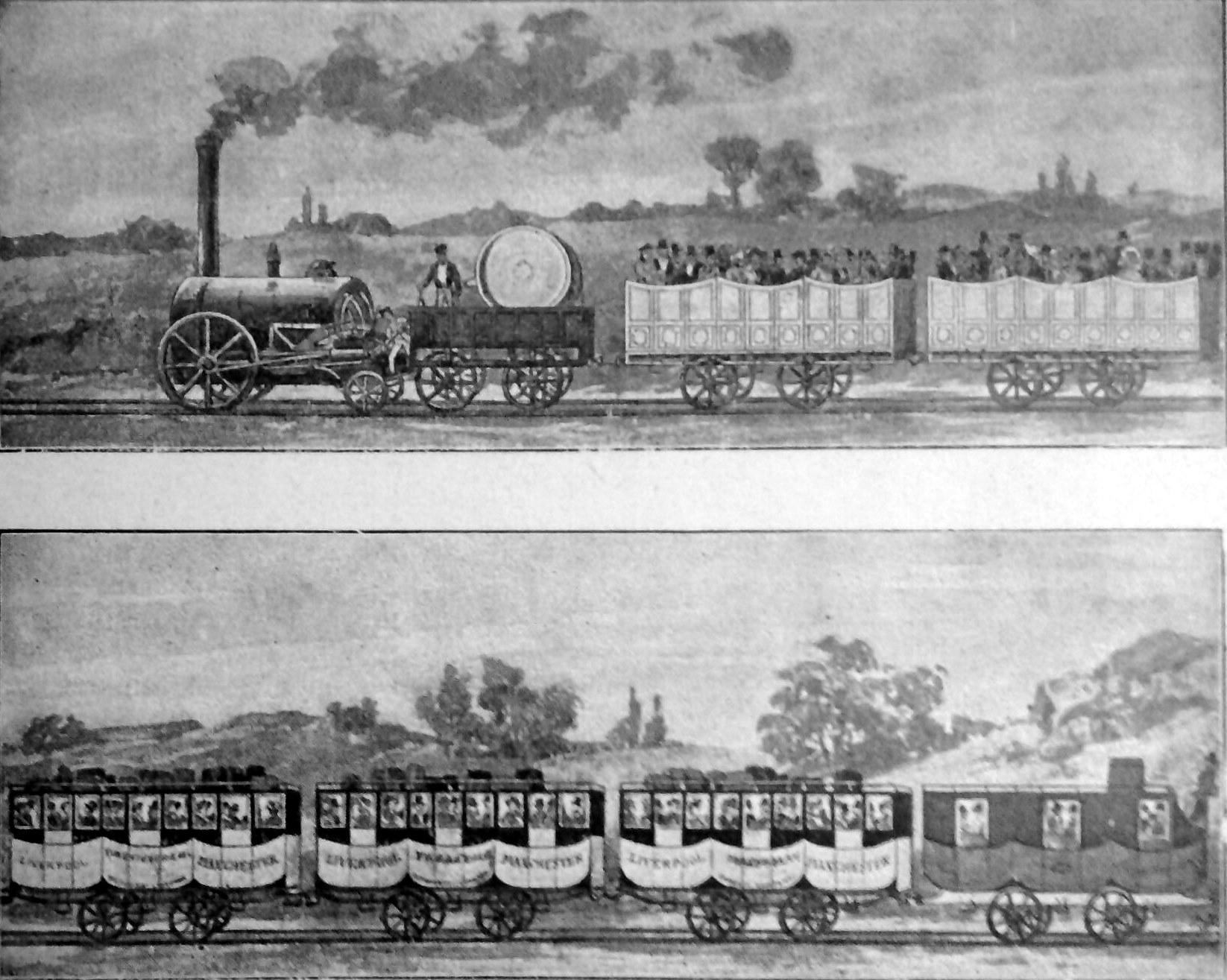|
Ebbw Vale Steelworks
Ebbw Vale Steelworks was an integrated steel mill located in Ebbw Vale, South Wales. Developed from 1790, by the late 1930s it had become the largest steel mill in Europe. It was nationalised after World War II. As the steel industry changed to bulk handling, iron and steel making was ceased in the 1970s, and the site was redeveloped as a specialised tinplate works. It was closed by Corus Group plc, Corus in 2002, but is being redeveloped in a joint partnership between Blaenau Gwent County Borough Council, Blaenau Gwent Council and the Welsh Government. Development By the mid to late 1700s, the steep-sided wooded valley of the River Ebbw, Ebbw Fawr river was home to a population of around 120, who worked the valley as farmers. In 1789, Walter Watkins was the owner of a forge in Glangrwney, near Crickhowell, which lacked an adequate supply of pig iron from the Clydach Ironworks. In agreement with two business partners, his son-in-law Charles Cracroft and iron master Jeremiah Homf ... [...More Info...] [...Related Items...] OR: [Wikipedia] [Google] [Baidu] |
Jeremiah Homfray
Sir Jeremiah Homfray (16 February 1759 – 9 January 1833) was an English ironmaster, best known for mineral developments in South Wales for and starting the Ebbw Vale ironworks. Early life The third son of Francis Homfray of Stourton Castle, joint owner with his younger brothers (Thomas and Samuel) of the Penydarren Ironworks. On the death of his father, he was made co-owner and joint Managing Director of the ironworks with his brother Samuel Homfray, M.P., of Coworth Park, Berkshire. In 1787, he married Mary, the daughter of John Richards, of Llandaff, and after this for many years resided at Llandaff House. Ebbw Vale Ironworks In 1789, Walter Watkins was the owner of a forge at the Clydach Ironworks in Glangrwney, Clydach Vale near Crickhowell, which lacked an adequate supply of pig iron. In agreement with two business partners, his son-in-law Charles Cracroft and Jeremiah Homfray, the three leased land at Pen y cae farm in the parish of Aberystruth from John Miles. Situated ... [...More Info...] [...Related Items...] OR: [Wikipedia] [Google] [Baidu] |
Penydarren Ironworks
Penydarren Ironworks was the fourth of the great ironworks established at Merthyr Tydfil in South Wales. Built in 1784 by the brothers Samuel Homfray, Jeremiah Homfray, and Thomas Homfray, all sons of Francis Homfray of Stourbridge. Their father, Francis, for a time managed a nail warehouse there for Ambrose Crowley. Most of the family were involved in trade as ironmasters or ironmongers (in this context meaning a manufacturer of iron goods). Samuel built Penydarren House on the opposite bank of the River Taf, as a home for the family locally. Because the owners of the Cyfarthfa Ironworks dominated the management of Glamorganshire Canal, the other Merthyr Tydfil ironworks built a tramroad to Abercynon, bypassing the upper sections of the canal. This "Penydarren Tramroad" (more correctly, the Merthyr Tramroad) was used for a trial of the first railway steam locomotive, built by Richard Trevithick. This successfully hauled wagons but was so heavy that it broke many rai ... [...More Info...] [...Related Items...] OR: [Wikipedia] [Google] [Baidu] |
Liverpool And Manchester Railway
The Liverpool and Manchester Railway (L&MR) was the first inter-city railway in the world. It Opening of the Liverpool and Manchester Railway, opened on 15 September 1830 between the Lancashire towns of Liverpool and Manchester in England. It was also the first railway to rely exclusively on locomotives driven by Steam engine, steam power, with no Horsecar, horse-drawn traffic permitted at any time; the first to be entirely double track throughout its length; the first to have a true Railway signalling, signalling system; the first to be fully Public transport timetable, timetabled; and the first to carry mail. Trains were hauled by company steam locomotives between the two towns, though private wagons and carriages were allowed. Cable railway, Cable haulage of freight trains was down the steeply-graded Wapping Tunnel to Liverpool Docks from Edge Hill junction. The railway was primarily built to provide faster transport of raw materials, finished goods, and passengers between ... [...More Info...] [...Related Items...] OR: [Wikipedia] [Google] [Baidu] |
Cupola Furnace
A cupola or cupola furnace is a melting device used in foundries that can be used to melt cast iron, Ni-resist iron and some bronzes. The cupola can be made almost any practical size. The size of a cupola is expressed in diameters and can range from . The overall shape is cylindrical and the equipment is arranged vertically, usually supported by four legs. The overall look is similar to a large smokestack. The bottom of the cylinder is fitted with doors which swing down and out to 'drop bottom'. The top where gases escape can be open or fitted with a cap to prevent rain from entering the cupola. To control emissions a cupola may be fitted with a cap that is designed to pull the gases into a device to cool the gases and remove particulate matter. The shell of the cupola, being usually made of steel, has refractory brick and plastic refractory patching material lining it. The bottom is lined in a similar manner but often a clay and sand mixture ("bod") may be used, as this lin ... [...More Info...] [...Related Items...] OR: [Wikipedia] [Google] [Baidu] |
Sirhowy Ironworks
: ''For the ironworks in the US state of Virginia, see Tredegar Iron Works.'' Tredegar Iron and Coal Company was an important 19th century ironworks in Tredegar, Wales, which due to its need for coke became a major developer of coal mines and particularly the Sirhowy Valley of South Wales. It is most closely associated with the Industrial Revolution and coal mining in the South Wales Valleys. Background In 1778 an iron furnace was built in the upper Sirhowy Valley by Thomas Atkinson and William Barrow, who came to the area from London."A look at Old Tredegar in photographs" Volume 1 Philip Prosser Old Bakehouse Publications 1990 Fuel was needed for the furnace so men were employed to dig coal at Bryn Bach and Nantybwch, the first small scale coal mining operation in the area. The furnace failed in 1794, and hence also the business. Sirhowy Ironworks In 1797, Samuel Homfray, with partners Richard Fothergill and the Matthew Monkhouse built a new furnace which they called the ... [...More Info...] [...Related Items...] OR: [Wikipedia] [Google] [Baidu] |
Quaker
Quakers are people who belong to the Religious Society of Friends, a historically Protestant Christian set of denominations. Members refer to each other as Friends after in the Bible, and originally, others referred to them as Quakers because the founder of the movement, George Fox, told a judge to "quake before the authority of God". The Friends are generally united by a belief in each human's ability to be guided by the inward light to "make the witness of God" known to everyone. Quakers have traditionally professed a priesthood of all believers inspired by the First Epistle of Peter. They include those with evangelical, holiness, liberal, and traditional Quaker understandings of Christianity, as well as Nontheist Quakers. To differing extents, the Friends avoid creeds and hierarchical structures. In 2017, there were an estimated 377,557 adult Quakers, 49% of them in Africa followed by 22% in North America. Some 89% of Quakers worldwide belong to ''evangelical'' a ... [...More Info...] [...Related Items...] OR: [Wikipedia] [Google] [Baidu] |
Bristol
Bristol () is a City status in the United Kingdom, cathedral city, unitary authority area and ceremonial county in South West England, the most populous city in the region. Built around the River Avon, Bristol, River Avon, it is bordered by the ceremonial counties of Gloucestershire to the north and Somerset to the south. The county is in the West of England combined authority area, which includes the Greater Bristol area (List of urban areas in the United Kingdom, eleventh most populous urban area in the United Kingdom) and nearby places such as Bath, Somerset, Bath. Bristol is the second largest city in Southern England, after the capital London. Iron Age hillforts and Roman villas were built near the confluence of the rivers River Frome, Bristol, Frome and Avon. Bristol received a royal charter in 1155 and was historic counties of England, historically divided between Gloucestershire and Somerset until 1373 when it became a county corporate. From the 13th to the 18th centur ... [...More Info...] [...Related Items...] OR: [Wikipedia] [Google] [Baidu] |
Blast Furnace
A blast furnace is a type of metallurgical furnace used for smelting to produce industrial metals, generally pig iron, but also others such as lead or copper. ''Blast'' refers to the combustion air being supplied above atmospheric pressure. In a blast furnace, fuel ( coke), ores, and flux (limestone) are continuously supplied through the top of the furnace, while a hot blast of (sometimes oxygen enriched) air is blown into the lower section of the furnace through a series of pipes called tuyeres, so that the chemical reactions take place throughout the furnace as the material falls downward. The end products are usually molten metal and slag phases tapped from the bottom, and flue gases exiting from the top. The downward flow of the ore along with the flux in contact with an upflow of hot, carbon monoxide-rich combustion gases is a countercurrent exchange and chemical reaction process. In contrast, air furnaces (such as reverberatory furnaces) are naturally aspirated, usu ... [...More Info...] [...Related Items...] OR: [Wikipedia] [Google] [Baidu] |
Llanelly
Llanelly () is a village, Community (Wales), community, and parish in the county of Monmouthshire, South East Wales. It formerly existed in the historic county of Brecknockshire. The population of the community and ward at the 2011 United Kingdom census, 2011 census was 3,899. The Brecon Beacons National Park encompasses the parish and the surrounding area. Location The community lies in the Clydach Gorge. It is bisected by the A465 road , Heads of the Valleys Road, and lies between Brynmawr in the west and Abergavenny in the east. Settlements The main settlements of the community are: Llanelly Hill, Blackrock, Clydach, Monmouthshire, Clydach, Maesygwartha and Gilwern. Llanelly Hill is the north-west hilltop of the Clydach Gorge. It developed as a result of coal mining and limestone quarrying for the nearby ironworks which included the Clydach Gorge#Clydach Ironworks, Clydach Ironworks and further west, the Ebbw Vale Steelworks, Ebbw Vale Ironworks. Blackrock and Clydach No ... [...More Info...] [...Related Items...] OR: [Wikipedia] [Google] [Baidu] |
Limestone
Limestone is a type of carbonate rock, carbonate sedimentary rock which is the main source of the material Lime (material), lime. It is composed mostly of the minerals calcite and aragonite, which are different Polymorphism (materials science), crystal forms of calcium carbonate . Limestone forms when these minerals Precipitation (chemistry), precipitate out of water containing dissolved calcium. This can take place through both biological and nonbiological processes, though biological processes, such as the accumulation of corals and shells in the sea, have likely been more important for the last 540 million years. Limestone often contains fossils which provide scientists with information on ancient environments and on the evolution of life. About 20% to 25% of sedimentary rock is carbonate rock, and most of this is limestone. The remaining carbonate rock is mostly Dolomite (rock), dolomite, a closely related rock, which contains a high percentage of the mineral Dolomite (mine ... [...More Info...] [...Related Items...] OR: [Wikipedia] [Google] [Baidu] |
Iron Ore
Iron ores are rocks and minerals from which metallic iron can be economically extracted. The ores are usually rich in iron oxides and vary in color from dark grey, bright yellow, or deep purple to rusty red. The iron is usually found in the form of magnetite (, 72.4% Fe), hematite (, 69.9% Fe), goethite (, 62.9% Fe), limonite (, 55% Fe), or siderite (, 48.2% Fe). Ores containing very high quantities of hematite or magnetite (typically greater than about 60% iron) are known as natural ore or irect shipping ore and can be fed directly into iron-making blast furnaces. Iron ore is the raw material used to make pig iron, which is one of the main raw materials to make steel — 98% of the mined iron ore is used to make steel. In 2011 the ''Financial Times'' quoted Christopher LaFemina, mining analyst at Barclays Capital, saying that iron ore is "more integral to the global economy than any other commodity, except perhaps oil". Sources Elemental iron is virtually absent o ... [...More Info...] [...Related Items...] OR: [Wikipedia] [Google] [Baidu] |
Coal
Coal is a combustible black or brownish-black sedimentary rock, formed as rock strata called coal seams. Coal is mostly carbon with variable amounts of other Chemical element, elements, chiefly hydrogen, sulfur, oxygen, and nitrogen. Coal is a type of fossil fuel, formed when dead plant matter decays into peat which is converted into coal by the heat and pressure of deep burial over millions of years. Vast deposits of coal originate in former wetlands called coal forests that covered much of the Earth's tropical land areas during the late Carboniferous (Pennsylvanian (geology), Pennsylvanian) and Permian times. Coal is used primarily as a fuel. While coal has been known and used for thousands of years, its usage was limited until the Industrial Revolution. With the invention of the steam engine, coal consumption increased. In 2020, coal supplied about a quarter of the world's primary energy and over a third of its Electricity generation, electricity. Some iron and steel-maki ... [...More Info...] [...Related Items...] OR: [Wikipedia] [Google] [Baidu] |








